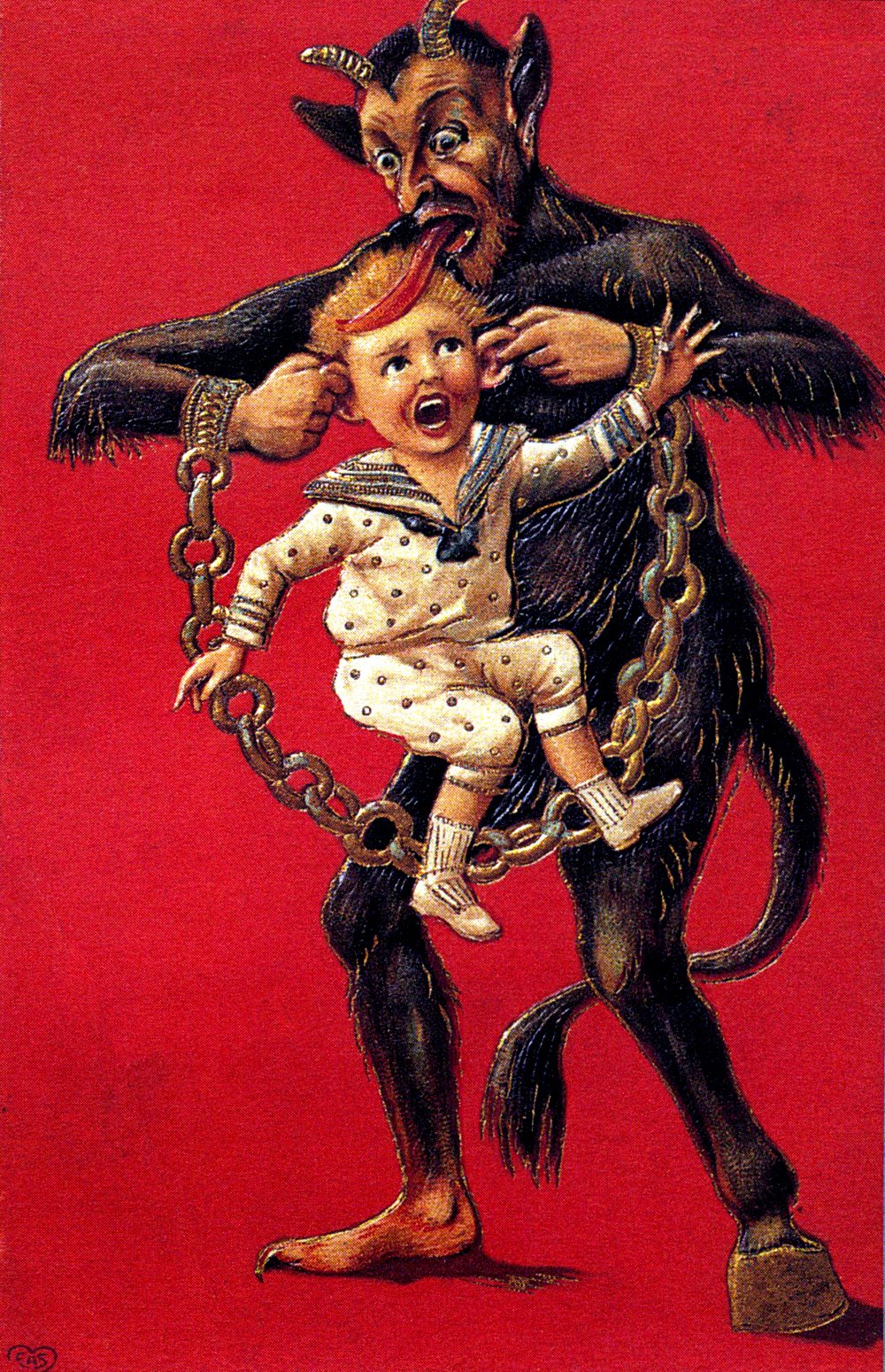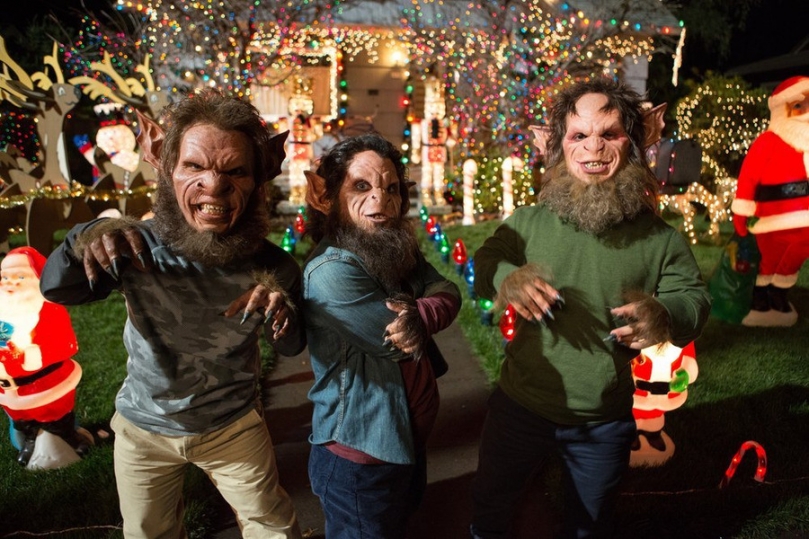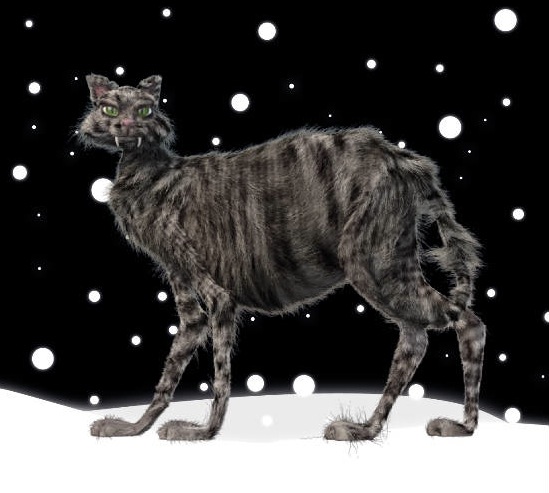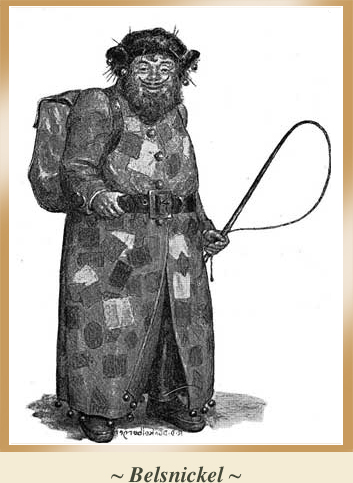Here in America, there is one major character that represents the entirety of the Christmas season, and I’m of course referring to Santa Claus. Santa brings awesome gifts to the good children and coal to the bad ones, and though his rituals are admittedly a tad bit creepy, he’s all around a benevolent figure.
In other countries, Christmas isn’t so simple, and those children who choose to be naughty don’t get off nearly as easy. Ancient folklore has conjured up many mythical monsters and creatures tied to the Christmas season, and let’s just say their version of ‘coal’ consists of ripping you out of bed and devouring your soul.
So let’s spread a little holiday fear here on Halloween Love today, by taking a look at five of these mythical monsters that are as anti-Claus as they come!
1) KRAMPUS
Though he’s been a staple of Nordic folklore since the 17th century, Krampus has only recently become a bonafide holiday icon here in the states, soon to be immortalized in horror films by both Kevin Smith and Michael Dougherty (Trick ‘r Treat). The polar opposite of Santa Claus, Krampus punishes the naughty children on Christmas, carrying them off in a sack and, by all accounts, dragging them straight to Hell.
A devil-like figure with cloven hooves, horns and an impossibly long tongue, Krampus is often depicted as wearing shackles on his wrists, like a My Pet Monster doll come to horrifying life. The hairy creature is essentially Santa Claus’ alter-ego, stalking the streets on the evening prior to The Feast of Saint Nicholas, commonly referred to as Krampusnacht (aka Krampus Night).
In America, Krampus has become somewhat of a revered figure for those looking to celebrate something a little less joyous during the holiday season, his likeness adoring beer bottles, toys and even ugly Christmas sweaters. Because this is America, after all: where all things must be commercialized.
2) KALLIKANTZAROS
Last year, NBC’s Grimm had a Christmas special centered on Krampus, while this year they delved into the myth of the Kallikantzaros. This past Friday night’s episode was all about the malevolent goblins, found in Greek, Turkish and Serbian folklore.
As legend has it, the little buggers live underground for most of the year, constantly sawing away at the ‘World Tree,’ with the intention of bringing about a complete collapse of the Earth. During the twelve days of Christmas, however, the Kallikantzaros come up to the surface to terrorize those who they are secretly working on destroying.
The appearance of these Christmas goblins differs from one area to the next, though they’re often depicted as hairy little creatures with body parts both human and animal. They almost always have long black tails and are said to smell quite putrid, and by some accounts they have various horns and animal tusks.
The strangest part of the Kallikantzaros legend is that children born during the twelve days of Christmas are in danger of turning into one of them each and every Christmas season, an idea that needs to be turned into a horror movie immediately. Like, right now.
3) THE YULE CAT
In Icelandic folklore there exists a figure known as Gryla, a giant female troll who comes down from the mountains to feast on naughty children. It is said that Gryla has thirteen children, known as the ‘Yule Lads,’ and she also has an evil sidekick, in the form of a feline referred to as Jolakotturinn (aka The Yule Cat).
According to lore, the massive black cat accompanies Gryla on her child-eating missions, lurking the countryside during the Christmas season to prey upon both children and adults. Unlike the other Christmas monsters, the Yule Cat doesn’t care if you’ve been naughty or nice: he/she/it only consumes those who don’t receive a new set of clothes, on the big day.
It’s likely that the bizarre story was conjured up by farmers, told to their workers in an effort to get them to produce clothing at a rapid pace – a verbal whip, if you will. Nothing like a healthy dose of fear, to kick your ass into high gear.
4) FRAU PERCHTA
Frau Perchta is one of the more interesting characters in the realm of Christmas folklore, originally starting out as a benevolent goddess in Southern Germanic paganism. Her name meaning “the bright one,” Perchta oversaw spinning and weaving, though somewhere along the way she took on a much more sinister form.
In more modern times, Frau Perchta has become a two-faced monster, appearing as either a kind old woman or an evil old hag. Perchta roams around on the twelve days of Christmas to make sure that all are working hard and behaving well. It is believed that she enters homes and rewards those who have, while she’s not so kind to those who haven’t…
As punishment, Perchta slits open the bellies of the naughty, removing their innards and replacing them with things like straw and pebbles. Those who have done enough work throughout the year, on the other hand, are rewarded with silver coins.
5) BELSNICKEL
Germanic folklore is also home to a being known as Belsnickel, who is less a monster and more a homeless dude who goes around beating children. Dressed in tattered clothing and typically sporting a big beard, Belsnickel travels from house to house in the days prior to Christmas, checking up on the children and making sure they’re being good.
While good children are given candy, which Belsnickel carelessly tosses onto the floor, the bad ones are beaten mercilessly with a switch, in an effort to get them to shape up before Santa rides into town. Belsnickel sometimes wears a sinister mask with a long tongue, as an added scare tactic.
By all accounts, Belsnickel is not interested in killing children, though he’s nevertheless one you’d rather not see outside your bedroom window. Because no matter his intentions, a homeless dude terrorizing children is fucking horrifying.
Hope you’ve been good this year…
Support Halloween Love
If an item was discussed in this article that you intend on buying or renting, you can help support Halloween Love and its writers by purchasing through our links:
(Not seeing any relevant products? Start your search on Amazon through us.)





